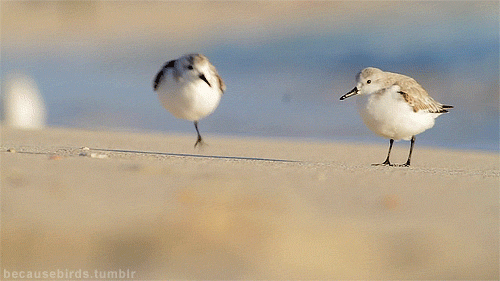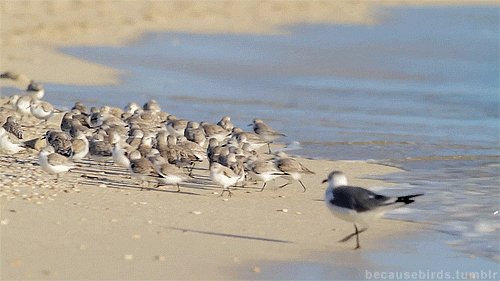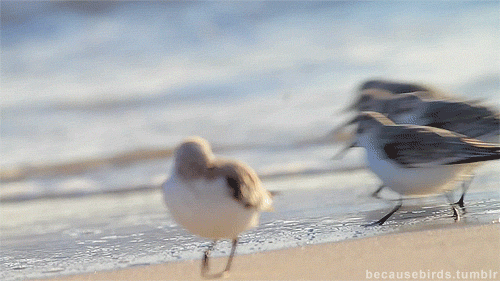nambroth:jenntalksnature:nambroth:becausebirds:Fluffy, running Sanderlings! source video N
nambroth: jenntalksnature: nambroth: becausebirds: Fluffy, running Sanderlings! source video Not saying you didn’t see a truly one-legged sanderling (that happens! and this is just a good prompt for me to talk about this behavior!), but it’s common for them (and other smaller shorebirds) to hop about for extended periods of time on one leg. It’s a thing they are known to do, something fun for bird watchers to look for, and it’s adorable. Sometimes they will even hop on the one leg until they feel threatened enough to fly away, never revealing the second leg. This common hopping behavior is probably why that particular gif was included in the set (though I can’t speak for the original poster), and the source video shows the behavior very well.I have to imagine that since this is a common behavior for them normally, in the event of losing an actual leg, it’s not a big inconvenience.From Bird Web:“Sanderlings flock, and members of different flocks interchange freely. The quintessential surf-dodger, the Sanderling is most recognized for its behavior of running down to the water’s edge with an outgoing wave, and racing back up the beach to avoid the next incoming wave. Dunlins and Western Sandpipers also do this, so this behavior is not diagnostic. They feed by probing, and leave bands of holes along a beach where they have stuck their beaks into the sand probing for food. They also feed in tire tracks. When roosting, they usually stand on one leg, and if disturbed, they will hop away from the disturbance on one leg.” Also for folks, here’s a neat article about birds standing on one leg. For sanderlings, if chasing, then running away, from waves wasn’t enough of an adorably silly behavior, the one-legged thing just makes them total derps.Finally, here’s a short video I took of the one-legged antics. This is a short hop, but seriously, they will hop for ages on one leg. (I also love how they look around and pivot on the one leg so they don’t have to lift their heads from their cozy feathers.) My mistake! I don’t see shorebirds often and was unaware of this behavior. It was the only individual doing one-legged locomotion and it did it for the hour I watched it so I assumed poorly. I removed my original post so I don’t spread misinformation! Oh jeez, don’t even worry about it! Like I said, it’s a very real possibility you saw a truly one-legged one!! I wasn’t trying to shame you or anything, just realized it was a good chance to talk about the behavior.Don’t think you were spreading misinformation!! Especially if it did it for an hour, I’d be hard-pressed to think it wasn’t truly one-legged (you were the one there, not me). -- source link
Tumblr Blog : tumblr.becausebirds.com



